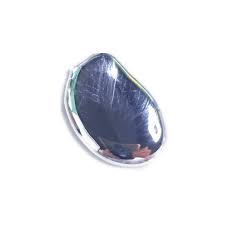
- +86-13363869198
- weimiaohb@126.com

Aug . 20, 2024 20:01 Back to list
Amorolfine Hydrochloride CAS 78613-38-4 Overview and Applications in China
Amorolfine Hydrochloride An Overview of Its Uses and Importance in Dermatology
Amorolfine hydrochloride, with the CAS number 78613-38-4, is an antifungal agent widely utilized in the treatment of dermatological infections, particularly those caused by fungi and yeasts
. This compound is especially noted for its effectiveness against onychomycosis, a fungal infection of the nails that can lead to discomfort, aesthetic concerns, and sometimes more severe complications if left untreated.Mechanism of Action
Amorolfine functions by inhibiting the synthesis of ergosterol, a vital component of the fungal cell membrane. By disrupting the formation of ergosterol, amorolfine compromises the integrity of the fungal cell membrane, leading to cell death. This mechanism of action is critical since ergosterol is not found in human cells, which helps spare human tissues and minimizes side effects compared to other antifungal treatments.
Formulation and Administration
Amorolfine is often formulated as a nail lacquer or topical solution, allowing for direct application on the affected areas. This method of administration is particularly advantageous as it enables high local concentrations of the drug directly where it is needed, while minimizing systemic absorption and potential side effects. Patients typically apply the lacquer once or twice a week, depending on the severity of the infection and the specific product guidelines.
Efficacy and Research
china amorolfine hydrochloride cas 78613-38-4

Numerous studies have validated the effectiveness of amorolfine in treating onychomycosis. Clinical trials have shown that amorolfine nail lacquer can produce significant clinical and mycological cure rates, often comparable to oral antifungal treatments but with a better safety profile. For patients seeking an effective topical alternative or those who cannot tolerate oral medications, amorolfine offers a valuable treatment option.
In addition to its antifungal properties, research is continuing to explore other potential applications of amorolfine. Its properties in inhibiting various fungi make it a candidate for treating other superficial fungal infections. However, its primary use remains in the management of nail fungal infections.
Safety and Side Effects
One of the advantages of amorolfine is its favorable safety profile. Topical application typically results in minimal systemic absorption, which significantly reduces the risk of systemic side effects. Common side effects can include local reactions such as burning, irritation, or allergic responses at the application site. However, serious allergic reactions are rare. It is essential for healthcare providers to monitor patients for any signs of adverse reactions during treatment.
Conclusion
As fungal infections continue to pose a challenge in dermatology, amorolfine hydrochloride has emerged as a significant player in the treatment landscape. Its targeted mechanism of action, efficacy in a non-systemic application form, and relatively benign side effect profile make it an invaluable tool for healthcare practitioners. Patients suffering from onychomycosis and other superficial fungal infections can benefit immensely from the therapeutic options offered by amorolfine. Continued research and clinical experience may reveal further benefits and applications of this antifungal agent, solidifying its status within dermatological therapies for years to come.
-
Pharmaceutical Intermediates - AI-Optimized Synthesis & Purity
NewsJul.31,2025
-
Top CAS: 79099-07-3 Factories & Wholesale Supplier from China
NewsJul.30,2025
-
High-Quality GS-441524 for White Liquid Type Factories & Suppliers
NewsJul.29,2025
-
High-Quality Pharmaceutical Intermediates for Sale – Reliable Supply
NewsJul.29,2025
-
High-Quality Pharmaceutical Intermediates for Sale - Reliable Solutions
NewsJul.29,2025
-
High-Quality Pharmaceutical Intermediates Supplier for Global Market
NewsJul.28,2025